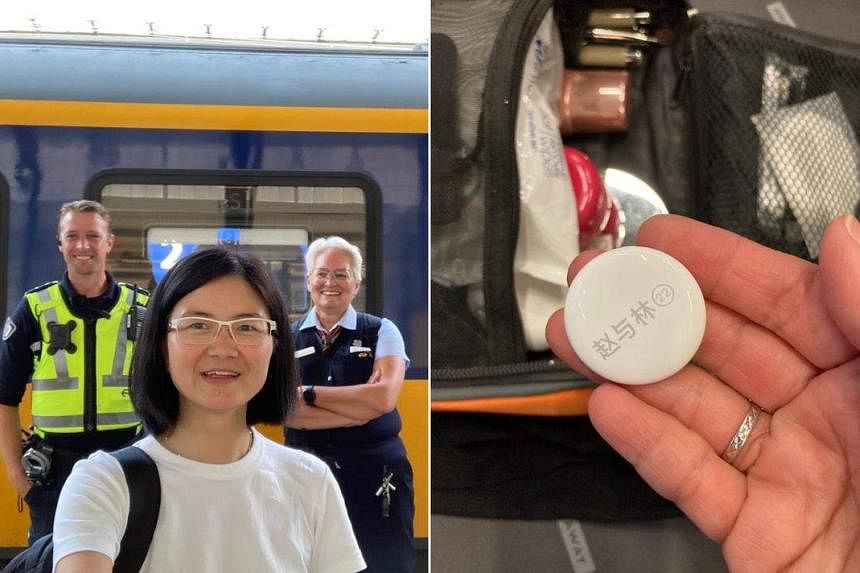How to prevent your luggage from getting lost - and what to do if it happens
Picture this: You are waiting for your suitcase at baggage claim, weary from a long flight and itching to start your holiday. It is a kaleidoscope of bags going around. You look for the yellow ribbon you have tied on your suitcase to identify it, but spot nothing. The same bags loop past multiple times.
Finally, you see those dreaded words on the screen above: Last bag on belt. Yours did not arrive.
This scenario may sound familiar, especially since thousands of travellers have found themselves in that plight in recent months as surging travel demand – along with a staff shortage in the global aviation sector – has led to baggage chaos. So 2022, the year of revenge travel, has become “the summer of lost luggage”.
In April, close to 220,000 bags were “mishandled” by American airlines – more than double the number in the same month in 2021, according to data from the United States Department of Transportation. Those were check-in bags that were lost, damaged, delayed or pilfered.
And in 2022, Spanish-headquartered multinational insurance company Mapfre reported that 30 per cent more travellers have reported stranded luggage, compared with in 2019.
A silver lining: Asia, where travel has been slower to pick up than in Europe and the US, has been spared the worst of the bedlam.
Ms Natascha Phua, senior manager of airport operations at Changi Airport Group, says there are ways to better the odds of your luggage arriving. The safest, of course, is to take along just a cabin bag, which she did on a trip to London in June.
But it may be hard for vacationers on long-haul flights to avoid checking in their luggage. Here are some tips to make the journey smoother.
1. Take a photo of your bag
Once you are done packing, photograph the contents of your luggage before closing it. If your bag is delayed or goes astray, this will come in handy for insurance claims if you need to show evidence of what you brought.
Also take a photo of your luggage from the outside, noting the brand and model, along with any identifying features. This may help airline staff identify your bag if they need to trace it.
When it comes to identifying your bag, skip the dangling luggage tags or suitcase straps that can come off, and consider a brightly coloured sticker instead.
“We pick up thousands of baggage straps each year,” an employee at Canada’s Calgary International Airport told me when I lost mine in April. His shrug seemed to suggest I should not have used one at all.
2. Drop a tracker in your luggage
Luggage trackers are small tile or button-like devices that allow you to keep tabs on your luggage using bluetooth or GPS signals. For instance, you can view the location of your Apple AirTag on the Find My app.
This can assure you that your luggage has made it safely to a transit destination, or your final stop before you are reunited at baggage claim. You can inform airline staff of your bag’s location if it is delayed, though you may not be able to speed up the process of getting it back. And if someone else takes your luggage, the Apple AirTag is capable of detecting the person's whereabouts – accurate to the general vicinity.
Singaporean Lin Huiyi, 41, experienced this first-hand – when her AirTagged luggage was stolen on a train from Amsterdam to Berlin in September. Together with the Amsterdam police, she was able to track it to the thief’s street. A beeping from her phone when the AirTag was close enough indicated the exact apartment. The police were able to retrieve her luggage, though some items including cash and art prints had been taken.
Ms Lin, an artist and market researcher, had slipped an AirTag (apple.com/sg/airtag) into her make-up case, which she believes helped avoid it being detected and thrown away by the thief. So skip the fancy key ring and place it somewhere inconspicuous. It costs $45 for an Apple AirTag or $149 for a pack of four.

3. Remove old baggage tags
It is common knowledge that you should remove old luggage tags from your suitcase handle. If you don't, check-in agents will do so for you.
Also remove the small barcode stickers that may have accumulated on your suitcase over the years. These are known as bingo tags, which contain information on your booking as well as which flight your bag should be directed to.
Having too many tags run the (albeit small) risk of confusing machines that are reading them, says Ms Phua, preventing your bags from arriving as they should.
4. Board early
Arrive at your boarding gate early to ensure there is room for your cabin bag on board. If the overhead bins are full, you may be asked to check in your cabin bag at the gate. This means it will be sent to the cargo hold with all other checked-in baggage on that flight and you may have to retrieve it at the baggage carousel.
The maximum dimensions for cabin bags vary slightly by airline, but are generally about 55cm by 45cm by 25cm including the wheels and handle. Exceed this and you may also be asked to check in your bag upon boarding.
5. Last resort: Lost and found
If the “last bag on belt” notice is showing on the baggage carousel screen but your bags have yet to arrive, they have likely been held up during the journey.
Your airline is responsible for making sure your bags arrive safely, so go to the lost-and-found counter with your boarding pass and baggage receipt to lodge a report. Some airlines, such as Singapore Airlines, also allow you to do this on their website.
Keep a copy of the report for your insurance claim. Baggage agents will be able to identify where your bag was last detected and can have it sent to your address.
Get The New Paper on your phone with the free TNP app. Download from the Apple App Store or Google Play Store now



